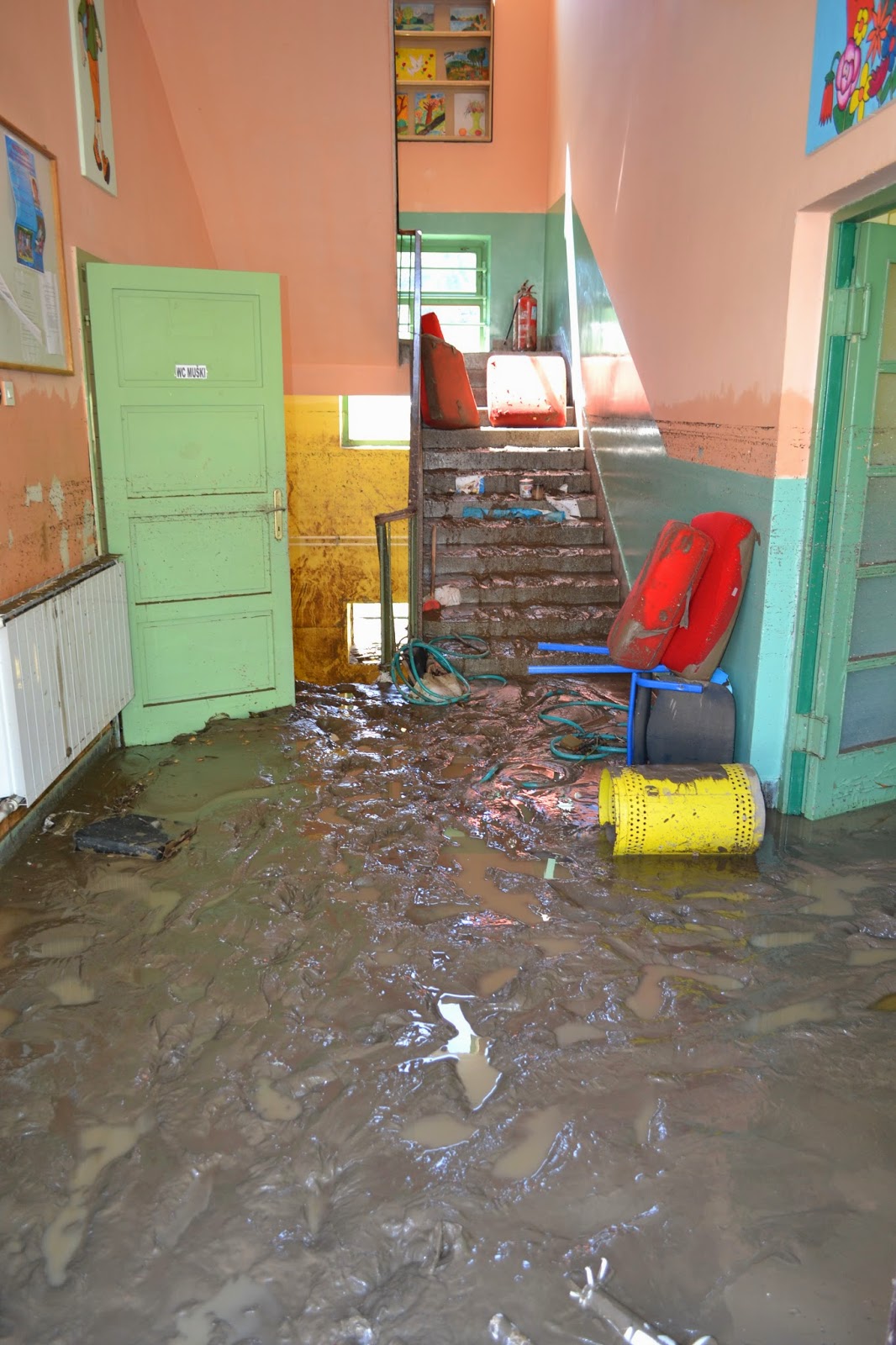This kind of flooding has not been seen in Bosnia and Herzegovina nor in Serbia ever before – it’s the worst flooding on record. Landslides have destroyed homes, many roads are completely washed away and much of the worst affected areas still cannot be reached because of damage to infrastructure. The bad weather is also affecting helicopters, which have been rescuing people from their rooftops. The situation is getting worse every hour. What seems to be an improvement in one site, it becomes a nightmare for the inhabitants of other communities, as the water moves down the river flow.
Save the Children is on the field, providing assistance to people affected by floods (Photo: Save the Children)
Cities such as Maglaj, Doboj, Banja Luka in Bosnia or Obrenovac in Serbia are literally under the water, which in some parts reaches the second level of apartment blocks. Hundreds of thousands of people remain without power and telecommunications as the search for the missing intensifies in Bosnia and Herzegovina and Serbia.
Three people have been confirmed dead in Serbia and three in Bosnia and Herzegovina while over 2 million people are affected following the flooding, which comes after three days of heavy rainfall. Dozens of landslides have destroyed homes and hampered rescue efforts.
According to the Prime Minister of Serbia, Mr. Aleksandar Vucic, the whole city of Obrenovac in Serbia, with population of 25500, is to be evacuated
To make the situation worse, the Landmine Action Centre of B-H warns about possible movement of the landmines which are scattered around the country since the war 1992-1995 due to landslides and the water torrents. This presents a particular threat to the people and especially children, as what were marked landmine fields are now left without the signs and the fields boarders may have significantly changed.
The welfare of children is currently the main concern of Save the Children, especially those most vulnerable. In cooperation with our partners in the field, the official authorities participating in the rescue operations and local NGOs, we have started distributing the most needed equipment contributing to the rescue efforts (boats, water pumps, electricity generators, boots, raincoats, etc.) and the livelihood items for the most affected families. The team of Save the Children in North-West Balkans have put a lot of efforts to make sure that our response comes as soon as possible to those in need. As the day was coming to its end, while a bit frightened with the news and what the night will bring to many people, still it was a great feeling to know that some of the aid is out, reaching the children and families in need, that the needed supplies will support the efforts of the rescue teams in the most affected areas. Through our support and our committed partners in Banja Luka, Tuzla, Sarajevo and Belgrade, some of families that had to be evacuated will be getting much needed support. The efforts of our partners in these communities have been also tremendous to alleviate the suffering of many boys and girls and their families.

City of Olovo have been badly affected
by the floods (Photo: klix.ba)
The data about the scope of damage is changing not from an hour to an hour, but from one minute to another. Thinking about the lifesaving, water, food, clothes, hygiene right at the moment. Most of the children in Bosnia and Serbia will not go to school after the weekend. More than half of the schools in Bosnia and Herzegovina have been closed as well as another 400 in Serbia because of the flooding. The school infrastructure is damaged or converted in shelters for the evacuated population. It is uncertain when the normal education system will be established in the most severely affected communities.
Save the Children is carrying out assessments to determine where the greatest needs are, and is working to source emergency relief items for distribution. As more of data comes in on the needs in different parts, further steps need to be taken. To save children’s lives, respond to needs and hopefully, soon get back to school and normality.
Save the Children has been working in Bosnia Herzegovina since 1996, and Serbia since 1994, running programs in child protection, education and child rights governance.

.JPG)
















.jpg)






